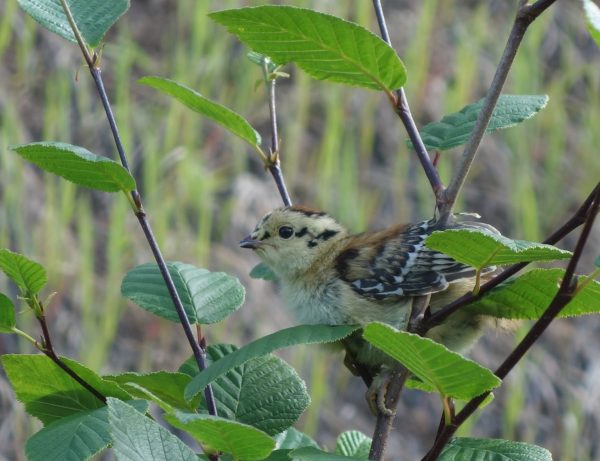High summer along the pipeline’s path
July 5, 2017
Ned Rozell
907-474-7468
YUKON RIVER — It's high summer, past the solstice. Everything is alive here on the path of the trans-Alaska pipeline.
Since I started this hike across Alaska on the last day of April in Valdez, the country has softened, greened up and started flowing. Before we blink and it's winter solstice again, here’s a description of this north-south line across the state at the time of light.
Light is a good place to start. I dropped the headlamp from my pack while in Fairbanks. Here, 60 miles south of the Arctic Circle, the sun drops beneath the hills to the northeast for a few hours. That time sort of resembles the minutes after the sun sets on winter solstice, with enough light to read a book outside. But now it is a temporary lull, just a few hours, followed by the coolest part of the day.
The upcoming few weeks are often the hottest of the year, due to the ground’s lag between releasing all that solar radiation it absorbed. The minimum temperature last night was in the 60s, which is warmer than the maximums we felt for more than the first month of the trip, through the Chugach and Alaska ranges.
The peak of summer heat has enabled other life forms to spring to existence. Most notable are the mosquitoes, making the most of their two-week lifespans on the creek bottoms and everywhere else with leaves and coolness. This has inspired me and my recent hiking partner — veteran from 20 years ago Andy Sterns — to carry creek water up hills in plastic jugs. Along with great views, we camp on top for stronger breezes that shove the devils back to the brush. Sometimes it works.

The billions of summer-visiting birds are doing their life’s work of replicating themselves in this land where the kitchen is suddenly open. Chicks of all species are making bold leaps toward the boreal forest floor, learning the magic in their wings.
A pair of red-tailed hawks was riding the breeze above Erickson Creek, screeching with the raptor sound familiar to most Americans. There, I had a deja vu moment looking at a man-size clump of twigs 20 feet up in a fire-killed spruce. I remember back to 1997. In that same nest were red-tailed hawk chicks, mouths yawning open.
The 2017 adult hawks seemed quite concerned at a small dog crashing through the bushes beneath that nest. I wondered if one of those birds was perhaps born in that nest 20 years ago. Because the birds can live for more than two decades if lucky, it's possible I was seeing one of those chicks born in 1997. Or, maybe those two were the same parent birds that fly to Costa Rica in the winter and return to this swampy subarctic valley each spring. They are here at a good time, one of newborn snowshoe hares, pint-size new grouse, voles darting the grasses and infinite daylight to hunt.
Since the late 1970s, the University of Alaska Fairbanks' Geophysical Institute has provided this column free in cooperation with the UAF research community. Ned Rozell is a science writer for the Geophysical Institute. This summer, he is hiking the path of the trans-Alaska pipeline from Valdez to Prudhoe Bay. He also did the trip 20 years ago.


